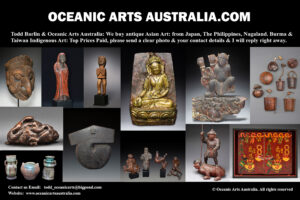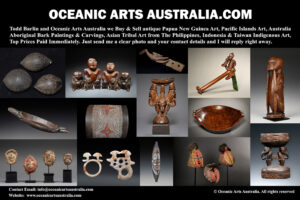Four Fine Old Chinese Burlwood Figures of Buddhist Saints or Lohan China 19th Century
| Collection No. | TB-2388 |
|---|---|
| Size | Height 19cm to 22cm |
Four Fine Old Carved Burlwood Figures of Buddhist Saints or Lohan from China 19th Century
These four beautiful burlwood carved figures of the Buddhist Saint Lohan also known as Arhats. Lohans are followers of the Buddha who reached enlightenment but have not yet attained the higher state of nirvana. Lohan is the Chinese name, Arhat is the Sanskrit, and Rakan is the Japanese all for the same person. These were likely carved in the early to mid 19th century and the use of root wood or burlwood was very popular in China during this time.
The Eighteen Arhats or Lohan are depicted in Mahayana Buddhism as the original followers of Gautama Buddha (arhat) who have followed the Noble Eightfold Path and attained the four stages of enlightenment. They have reached the state of Nirvana and are free of worldly cravings. They are charged to protect the Buddhist faith and to wait on earth for the coming of Maitreya, an enlightened Buddha prophesied to arrive on earth many millennia after Gautama Buddha’s death In China, the eighteen arhats are also a popular subject in Buddhist art,
Originally, the arhats were composed of only 10 disciples of Gautama Buddha, although the earliest Indian sutras indicate that only 4 of them, Pindola, Kundadhana, Panthaka, and Nakula, were instructed to await the coming of Maitreya.
Later this number increased to sixteen to include patriarchs and other spiritual adepts. Teachings about the Arhats eventually made their way to China where they were called Lohan (羅漢, shortened from a-luo-han a Chinese transcription for Arhat),
A cult built around the Lohans as guardians of the Buddhist faith gained momentum amongst Chinese Buddhists at the end of the ninth century for they had just been through a period of great persecution under the reign of Emperor Tang Wuzong
In Chinese art, Rootwood objects have always been regarded as “sculptures” with each piece being unique in form; Rootwood sculptures have been collected by the Chinese as early as the Song Dynasty. Rootwood was especially appealing to scholars because of its often-eccentric shapes and movements, which enabled the mind to form various interpretations of its pictorial possibilities.”
The Qianlong Emperor was a great admirer of the Lohan and many images such as these were made for Burlwood.
Provenance: The Todd Barlin Collection of Asian Buddhist Art
INQUIRE HERE
To see many more rare items and the finest masterpieces, please make an appointment with us to visit the gallery.
For all inquiries, please contact us.













